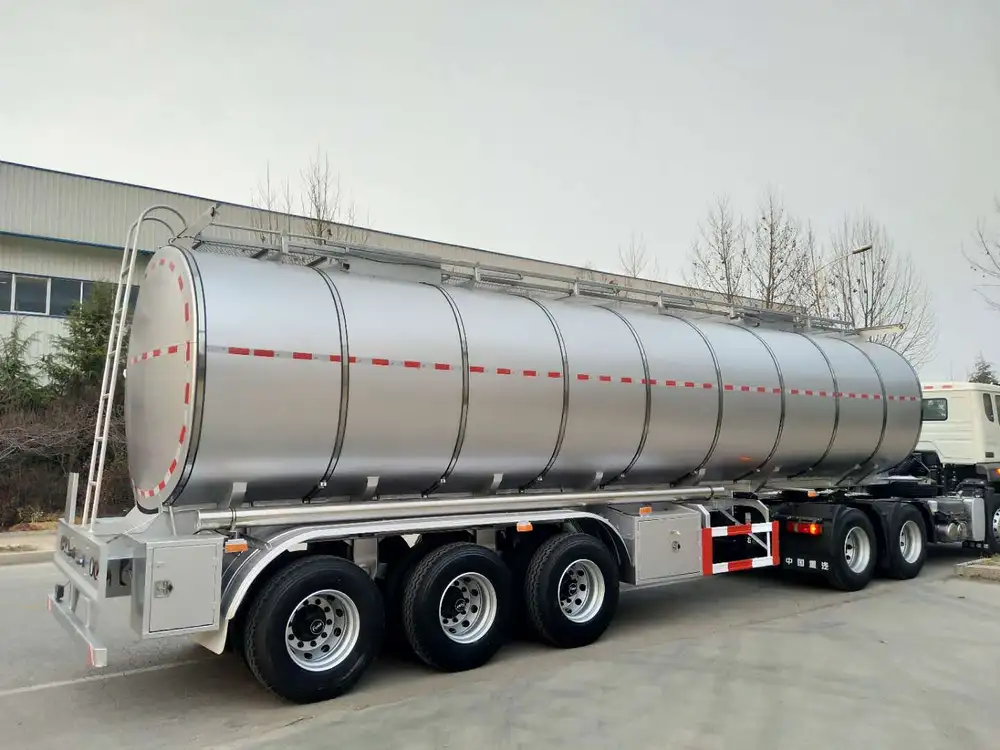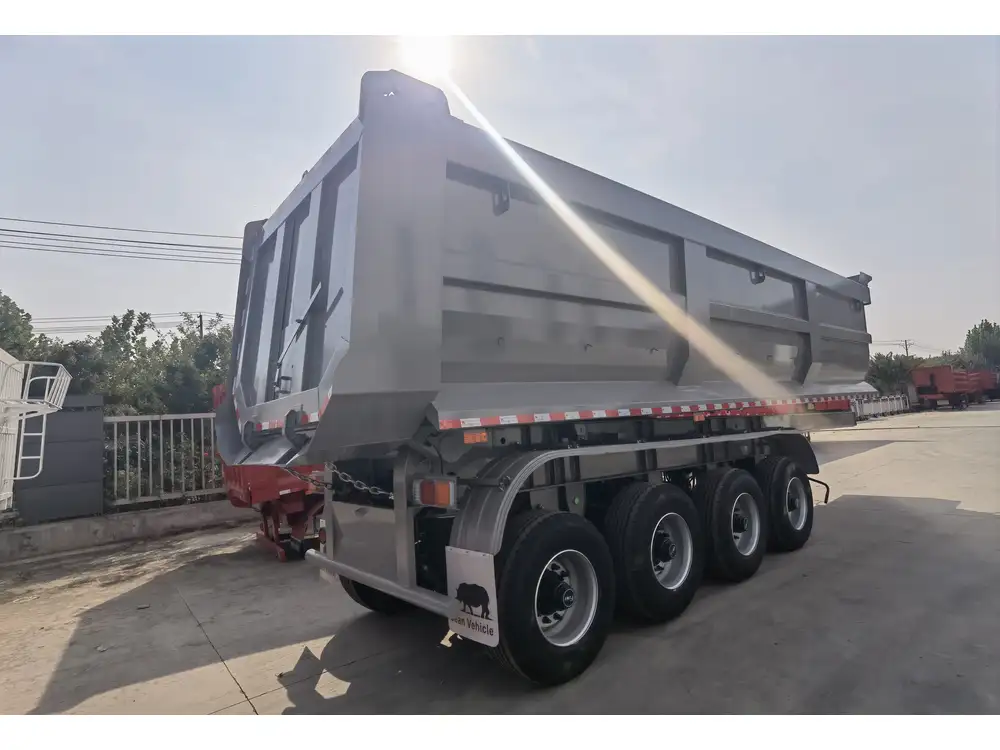In the world of transportation, particularly in the logistics involved with semi-trailers, understanding regulations can mean the difference between compliance and costly penalties. One of the critical areas of focus is the state-specific regulations concerning individual tandems on semi-trailers. This comprehensive analysis aims to delve into various aspects of these regulations, providing manufacturers, fleet operators, and logistics managers with an extensive overview of how state laws influence the design, configuration, and operation of semi-trailers equipped with tandem axles.
What is a Tandem Axle Configuration?
A tandem axle configuration refers to a setup where two axles are placed close together on a semi-trailer. This design is fundamental to the stability and weight distribution of large transport vehicles. Each axle plays a crucial role in supporting the semi-trailer’s load, enhancing traction, improving handling, and ensuring safety during transportation. Typically, tandem axles are utilized to manage heavier loads, accommodating everything from construction materials to pallets of goods.
Advantages of Tandem Axles
- Load Distribution: Tandem axles facilitate even weight distribution across the trailer, reducing the risk of overloading any single axle.
- Enhanced Stability: The proximity of the axles improves lateral stability, ensuring safer maneuvers while navigating turns or uneven terrain.
- Increased Towing Capacity: By utilizing tandem axles, trailers can support greater weights, allowing operators to transport larger shipments.
- Enhanced Traction: With more tires on the road, tandem axles provide better traction, particularly in challenging weather conditions.

State-Specific Regulations Governing Tandem Axles
Understanding how state regulations vary is essential for any semi-trailer manufacturer or operator looking to optimize their fleet for compliance and efficiency. Regulations can significantly affect permissible axle weight limits, spacing, and even trailer design. Below is a comparison table of various states and their specific regulations regarding tandem axles on semi-trailers.
| State | Max Axle Weight | Max Weight on Tandem Axles | Tandem Spacing Requirement | Notes |
|---|---|---|---|---|
| California | 34,000 lbs | 80,000 lbs total | 36 inches minimum | Must comply with bridge formula |
| Texas | 34,000 lbs | 80,000 lbs total | 40 inches minimum | Allows for various trailer configurations |
| New York | 34,000 lbs | 80,000 lbs total | 36 inches minimum | Strict enforcement of axle weight limits |
| Florida | 34,000 lbs | 80,000 lbs total | No specific requirement | Seasonal variations in enforcement |
| Illinois | 34,000 lbs | 80,000 lbs total | 36 inches minimum | Must comply with IDOT regulations |
This table outlines only a few examples. Regulations may vary further based on local authorities, specific routes, and even the type of cargo being transported.
Key Considerations for Compliance
As regulations differ from state to state, fleet operators must consider several factors when planning routes or designing trailers:
- Permissible Weight Limits: It is crucial to be familiar with whether the combined weight of the trailer and cargo adheres to state limits.
- Tandem Axle Spacing: Operators should ensure that the spacing between the tandem axles meets state requirements to avoid fines and maintain safety.
- Permitting: Some states require special permits for trailers that exceed standard weight limits or deviate from typical axle configurations.
Impact of Axle Regulations on Warehouse and Transport Operations
Logistics does not exist in a vacuum. Regulations concerning tandem axles have real-world implications for how warehouses and transport companies operate. A mismatch between a fleet’s configuration and state regulations can lead to unnecessary delays, increased costs, and disruptions in service. Below we analyze how axle regulations directly affect operations:

Loading Dock Design
- Dock Heights: Many warehouses must design docks that accommodate semi-trailers with tandem axles. This often results in specific height requirements for loading docks to ensure seamless loading and unloading.
- Weight Limits: Warehouses must understand the weight limits imposed by state regulations to avoid overloading vehicles on their property, which can lead to fines.
Route Planning
- Construction Zones: When planning routes, logistics companies must consider whether bridges or roads can support the weight of tandem axle configurations.
- Weight Stations: Operators must be aware of where weight stations are located, ensuring their fleets adhere to local limits before getting to a station.
Essential Technologies for Maintaining Compliance
The integration of technology in semi-trailer operations has transformed how companies monitor compliance and optimize performance. Here are some technologies that assist in adhering to tandem axle regulations:

Load Monitoring Systems
These systems use sensors to monitor the weight distribution on each axle, allowing operators to adjust loads when necessary.
- Real-Time Alerts: Operators receive notifications regarding overloading, enabling quick resolutions.
- Data Logging: Historical data can inform better loading practices and future trailer configurations.
GPS Route Mapping
Advanced GPS systems can identify routes that are compliant and inform drivers of potential weight limits and restrictions.
- Dynamic Routing: Adjusts routes in real-time based on vehicle weight and state regulations.
- Compliance Alerts: Drivers receive alerts if they are nearing a weight station or a zone with additional restrictions.
The Future of Tandem Axles: Trends and Predictions
As transportation technology continues to advance, so too do regulations and designs surrounding tandem axles on semi-trailers. Companies need to stay ahead of trends to maintain competitive advantages.

Eco-Friendly Designs
The push towards sustainability will likely drive innovations in semi-trailer manufacturing. Manufacturers may look to lightweight materials, electric-powered axles, and alternative fuels.
- Material Innovations: Lightweight composites could reduce the overall weight of the trailer, improving fuel efficiency while allowing for additional load without exceeding axle limits.
- Alternative Fuel Sources: Adoption of electric and hybrid models inherently affects weight distribution and may alter state regulations regarding horsepower and weight classifications.
Autonomous Vehicles
The emergence of autonomous technology presents new challenges and opportunities for tandem axle configurations.
- Automated Load Management: Advanced AI systems could automate load distribution, enhancing compliance with state regulations regarding weight limits.
- Smart Trailers: Integration of IoT devices to monitor real-time data regarding load distribution, weather conditions, and route compliance could revolutionize the logistic industry.
Conclusion: Navigating the Complex World of Tandem Axles
As we navigate the intricate landscape of regulations surrounding tandem axles on semi-trailers, it becomes increasingly clear that adherence to state-specific laws is not merely a matter of compliance, but also a strategic opportunity. By understanding the regulations that govern their operations, semi-trailer manufacturers and fleet operators can enhance their efficiency, reduce costs, and improve overall safety.
Adapting to these conditions requires a proactive approach — one that emphasizes not only compliance but also innovation in design and technology. A commitment to staying updated with regulations, understanding operational impacts, and leveraging technological solutions will pave the way for a more sustainable and efficient future in the transportation sector.
In this complex realm, knowledge is power — and staying informed leads to success. Explore state-specific regulations, adapt to innovative technologies, and streamline your operations to stay ahead in the competitive transportation landscape. With these insights, navigating the world of tandem axles will be less daunting and more fruitful for your semi-trailer operations.



